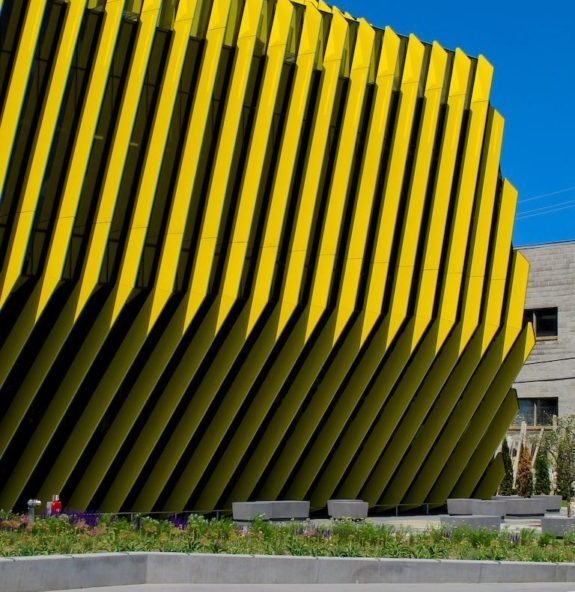
April 18, 2017; Chicago Tribune
After almost two years of a budget impasse, the future is not looking very bright for education in Illinois. With the state heading toward the end of a second year without a budget and a third “budget-free” year looming, signs of financial distress are being seen in state funded universities and in a growing number of K-12 school districts.
Moody’s Investor Services announced earlier this week it was downgrading the debt of one university and reviewing the credit-worthiness of six other state-funded universities that together have more than $2 billion dollars in outstanding debt.
In its press release announcing its actions, Moody’s said its review was “prompted by failure of the State of Illinois to enact a budget providing full operating funding to the universities for the current fiscal year (FY) 2017 and resulting operational and liquidity strains on the universities.”
According to Reboot Illinois, as Moody’s completes this reassessment, it will look at “indicators like available reserves, the ability to reduce expenses as well as overall financial performance, despite zero state appropriations and no short-term debt financing options.” Servicing this debt will become more expensive if Moody’s ends its review with a downgrade, and the already cash-starved schools will have to climb out of a deeper hole.
The colleges and universities of Illinois have been operating with intermittent and decreased funding throughout the months that the standoff between a Republican governor and a Democratic-controlled state legislature has gone unresolved. The current year began with a temporary funding agreement that provided university funding for the first half of the state’s 2017 fiscal year. But no agreement could be reached on providing even stopgap funding for the second half of the year, forcing each university to again cope with a total loss of state funding.
Northeastern Illinois University has been among the hardest hit. Over almost two years, its state funding is less than half of what it had been before the state’s problems blew up. According to the Chicago Tribune, “The university shut down its campus and furloughed all employees during its spring break, closing computer labs, the library and other academic services. Students with state-funded campus jobs also were unable to work. The campus also closed for two days last week and will be closed again May 1st.”
While K-12 public school districts have continued to receive their basic level of state funding, they too are showing cracks as the stalemate continues. Delayed payments to local districts have caused cash flow problems that not all districts find easy to manage. Moreover, the budget stalemate has made it impossible for necessary revisions to the current, inadequate funding formula to be made.
Sign up for our free newsletters
Subscribe to NPQ's newsletters to have our top stories delivered directly to your inbox.
By signing up, you agree to our privacy policy and terms of use, and to receive messages from NPQ and our partners.
Continued funding has resulted in the improved overall financial health of Illinois public schools, as districts have become better at managing their finances. But according to the State Board of Education, the situation may not be as bright as it seems and problems are looming just over the horizon.
For some [districts], that burden has pushed them into a risky financial situation. School district administrators facing major cash flow difficulties continue to make hard choices. They have chosen to reduce expenditures via reductions in force, forgo supplies, delay facility repairs/maintenance, and delay purchase of replacement buses. They have also increased cash balances by issuing debt or restructuring debt payments. Districts are now at a point where additional budget reductions are going to be very difficult to realize without impacting the education of students.
Reboot Illinois pointed to a statement issued by State Superintendent Tony Smith in highlighting the deeper threat that is masked by some short-term good news.
Illinois school districts’ financial health has improved over the last year, but at what cost to students. Illinois must overhaul our school funding model, which is the most inadequate and the most inequitable in the country. Every school district in the state is having to make hard choices to cover the day-to-day costs of keeping their schools’ doors open. Forcing school districts to rely primarily on taxing local property wealth to fund education inherently means the students who need the most will receive the least. We expect dedication, innovation, and improvement from our administrators, educators, and students; we owe them the resources necessary to meet those expectations.
The signs that all levels of Illinois’s education system are losing their ability to keep going while the state’s budget remains frozen are all too visible. And it is not just the education sector that is in this predicament. Nonprofits in the human services and medical arenas face the same pressures and show the same signs of distress.
Yet the political leadership remains stuck in its positions. The Chicago Tribune cited a statement issued on behalf of Governor Bruce Rauner that does little more than pass blame across the aisle.
“The Governor understands and is gravely concerned about the severe financial challenges facing our students, colleges and universities due to the General Assembly’s failure to pass a balanced budget,” Rauner spokeswoman Eleni Demertzis said in a statement. “This is why he is working every day to find consensus on a budget that is truly balanced, and ensure the state’s higher education system thrives in the long term.”
Democrats continue to point to the governor’s insistence that a budget agreement be tied to approval of his reform agenda as the stumbling block. For two years, neither side has found a way to move beyond this impasse. While they talk, the situation continues to worsen.—Martin Levine












